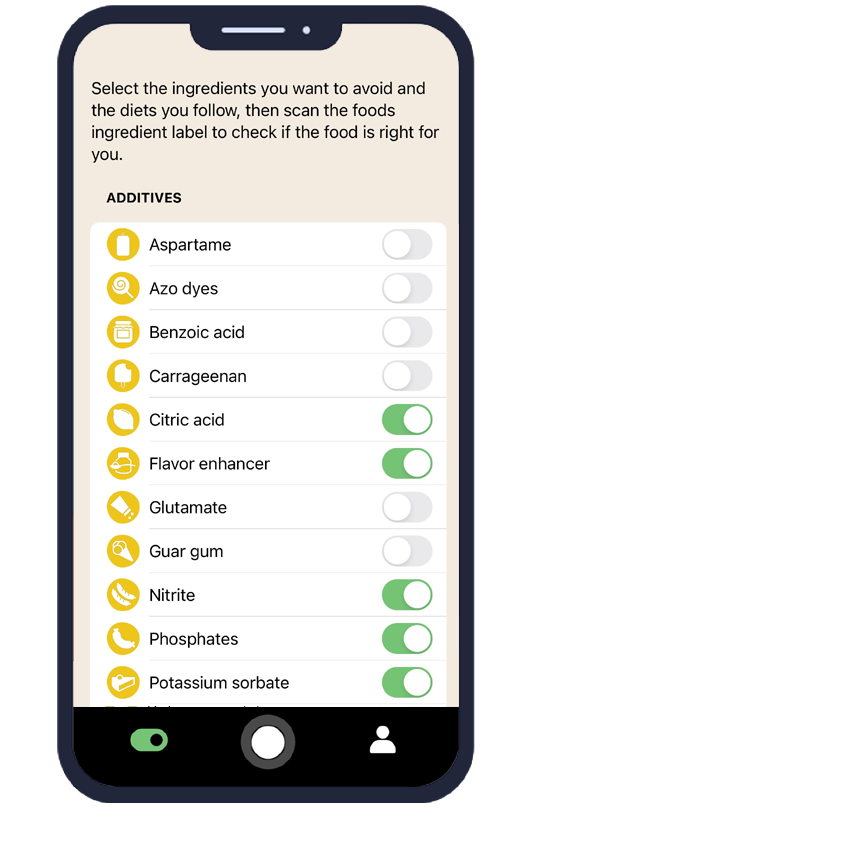Everything You Need to Know About Palm Oil and How AI Eat This Can Help
Palm oil is one of the most widely used ingredients in processed foods, appearing in everything from cookies to margarine. For consumers with dietary restrictions, health concerns, or environmental considerations, identifying palm oil in food products can be challenging. The AI Eat This app revolutionizes how people manage their dietary needs by instantly scanning ingredient lists and identifying palm oil in any language, making it easier than ever to make informed food choices.
Whether you're avoiding palm oil for health reasons, environmental concerns, or personal preferences, understanding where it's found and how to identify it is crucial for maintaining your desired diet. This comprehensive guide explores everything you need to know about palm oil and how modern technology can simplify your shopping experience.
What Is Palm Oil and Where Is It Used?
Palm oil is a versatile vegetable oil extracted from the fruit of oil palm trees, primarily grown in tropical regions. As a food additive, palm oil serves multiple purposes including extending shelf life, providing texture, and acting as a cooking medium. Its semi-solid consistency at room temperature makes it particularly valuable in processed food manufacturing.
This ingredient appears in countless everyday products, often under various names that can make identification difficult. Food manufacturers frequently use palm oil because of its stability, neutral taste, and cost-effectiveness compared to other oils.
Common Foods Containing Palm Oil
Palm oil is ubiquitous in the modern food supply, appearing in numerous categories of processed foods. Understanding where to look for this ingredient can help consumers make more informed purchasing decisions.
- Baked goods including cookies, crackers, and pastries
- Margarine and butter substitutes
- Chocolate and confectionery products
- Instant noodles and processed snacks
- Ice cream and frozen desserts
- Breakfast cereals and granola bars
- Nut butters and spreads
- Ready-made meals and sauces
Is Palm Oil Safe? What Does the Research Say?
Palm oil safety has been extensively evaluated by major health authorities worldwide. The FDA recognizes palm oil as generally recognized as safe (GRAS) for food use. Similarly, the European Food Safety Authority (EFSA) has assessed palm oil and established guidelines for its use in food products.
The World Health Organization acknowledges palm oil as a source of dietary fats, though it emphasizes the importance of balanced fat intake. Most health concerns around palm oil relate to its saturated fat content rather than toxicity or immediate safety issues.
Regulatory Approvals and Guidelines
Palm oil has received approval from multiple international food safety organizations. However, some regulatory bodies have raised concerns about certain processing contaminants that can form during high-temperature refining processes. These concerns have led to ongoing research and improved processing methods within the industry.
For most consumers, moderate palm oil consumption as part of a balanced diet poses no immediate health risks. The key consideration is understanding your individual dietary needs and restrictions.
Risks for Specific Groups
While palm oil is generally safe for consumption, certain individuals may need to limit or avoid it entirely. People following specific dietary restrictions for health, environmental, or ethical reasons often seek to eliminate palm oil from their diet. Additionally, some individuals may experience digestive sensitivity to palm oil, though true palm oil allergies are extremely rare.
How Does AI Eat This Help You Avoid Palm Oil?
The AI Eat This app transforms the challenging task of identifying palm oil into a simple, instant process. By using advanced artificial intelligence technology, the app can scan ingredient lists through your smartphone camera and immediately identify palm oil presence, regardless of the language or alternative names used on packaging.
This innovative tool addresses a common frustration among health-conscious consumers: deciphering complex ingredient lists. Palm oil often appears under various names including palm kernel oil, palmitate, or specific E-numbers, making manual identification time-consuming and error-prone.
The app's personalized filter system allows users to set specific dietary restrictions, including palm oil avoidance. Once configured, AI Eat This provides instant alerts when scanning products, helping users make quick, informed decisions while shopping. This feature is particularly valuable for people managing multiple dietary restrictions simultaneously.
Who Should Avoid Palm Oil?
Several groups of consumers actively seek to avoid palm oil in their diet. Environmental advocates often eliminate palm oil due to concerns about deforestation and habitat destruction associated with palm oil production. These consumers view avoiding palm oil as an important step in reducing their environmental footprint.
Health-conscious individuals may limit palm oil intake due to its saturated fat content, particularly those managing cardiovascular health or following specific dietary protocols. While palm oil intolerance is uncommon, some people report digestive discomfort when consuming products high in palm oil.
People following certain religious or cultural dietary restrictions may also need to avoid palm oil depending on processing methods or certification requirements. Additionally, individuals committed to supporting sustainable agriculture practices often choose palm oil-free alternatives.
Tips for Maintaining a Palm Oil-Free Diet
Successfully avoiding palm oil requires strategy and awareness, as this ingredient is prevalent throughout the food supply. Reading ingredient labels becomes essential, but the complexity of alternative names makes this challenging without proper tools.
Focus on whole, unprocessed foods whenever possible, as these naturally contain no added palm oil. Fresh fruits, vegetables, whole grains, and minimally processed proteins form the foundation of a palm oil-free diet. When purchasing packaged foods, prioritize products that explicitly state "palm oil-free" on their packaging.
Cooking at home using alternative oils like olive oil, coconut oil, or avocado oil gives you complete control over ingredients. Prepare homemade versions of commonly palm oil-containing foods like granola bars, nut butters, and baked goods.
Utilize technology like AI Eat This to streamline your shopping process. The app's instant scanning capability eliminates guesswork and saves time while ensuring you maintain your dietary restrictions consistently.
Alternative Names for Palm Oil
Palm oil appears on ingredient lists under numerous alternative names, making identification challenging for consumers. Common variations include palm kernel oil, palm fruit oil, palmitate, and various chemical derivatives. The ingredient may also be listed using E-numbers in European products, such as E471 when used as an emulsifier.
Manufacturers sometimes use terms like "vegetable oil" without specifying the source, which may include palm oil. This ambiguity makes apps like AI Eat This invaluable for consumers seeking transparency in their food choices.
Conclusion
Understanding palm oil and its prevalence in food products empowers consumers to make informed dietary choices aligned with their health goals and values. While palm oil is generally recognized as safe by major health authorities, many people choose to avoid it for environmental, health, or personal reasons.
The AI Eat This app revolutionizes how consumers navigate dietary restrictions by providing instant, accurate ingredient identification. This technology eliminates the confusion and time-consumption associated with manually checking ingredient lists, making it easier than ever to maintain a palm oil-free diet.
Whether you're avoiding palm oil for health reasons, environmental concerns, or personal preferences, having the right tools makes all the difference. Download AI Eat This for free testing today and take control of your dietary choices with confidence and convenience!

70 filters
With over 70 filters, you can easily avoid certain ingredients and follow your dietary preference.

Paleo

Pescetarian

Ultra-processed food

Vegan







































































